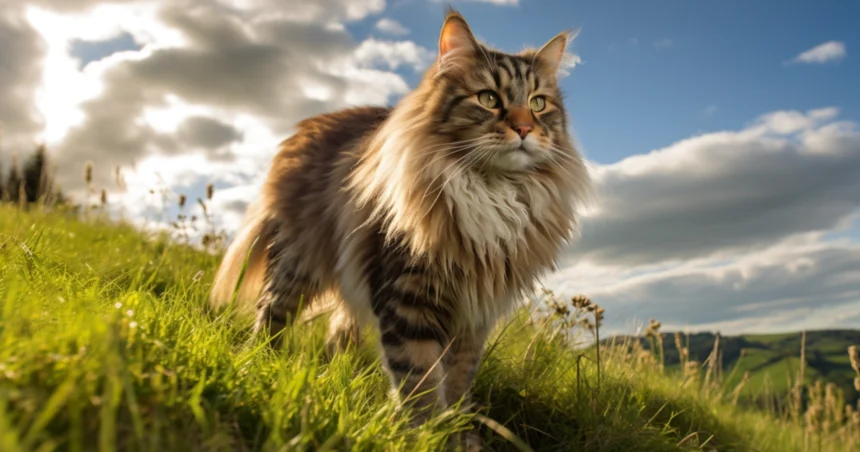Raise your hand if you’ve been victim to the hair splinter – those cat hairs that somehow pierce into your skin! We cat lovers are all too familiar with this prickly phenomenon. In this article, we’ll get to the bottom of these sneaky splinters. You’ll learn what causes them, how to remove the suckers, and pro tips to avoid them in the future. Read on for the full hairy scoop!
What are Hair Splinters?
A hair splinter is just what it sounds like – a hair that somehow splinters into your skin. It happens when a strand of hair punctures the top layer of human skin, causing irritation. Hair splinters are especially sneaky right after your cat gets a haircut. Those freshly chopped hairs can be sharp enough to pierce into your skin. Ouch!
Why Cat Hair?
Cats with short, coarse coats tend to cause the most hair splinters. Breeds like American Wirehairs and Devon Rexes have thick, bristly fur that can easily penetrate skin. The variety of coat textures and lengths among cats also plays a role. Fluffy longhairs shed less prickly fur than shorthairs and hairless breeds.
Handling a Hair Splinter
Discovering that a hair has pierced your skin can be a surprise, and while most of the time it’s more of a minor annoyance, the potential for complications means it shouldn’t be taken lightly.
Immediate Actions
Alright, let’s get to the point—literally. If you’ve got a hair splinter, time is of the essence. Quick and appropriate action can save you a lot of discomfort down the line.
- Surface-Level Troublemakers: For splinters that are just barely beneath the skin, good old duct tape can come to the rescue. Place a piece of tape over the splinter and gently pull it off. It can help to moisten the skin first.
- Deeper Offenders: In case the hair has dug in a bit deeper, you’ll need a sterilized needle and tweezers. Gently use the needle to tease the skin layers covering the splinter, then use the tweezers to pull it out. It’s crucial to sterilize these tools first to avoid introducing bacteria into the skin.
- Post-Removal Care: Once the splinter is out, rinse the affected area with warm water. Apply a thin layer of antibiotic ointment and cover it with a bandage to keep it clean.
When to Seek Medical Help
A hair splinter might seem trivial, but trust me, complications can arise. If you notice signs of infection like redness, swelling, or increased pain, it’s time to consult a physician. More serious conditions like interdigital pilonidal sinus (don’t let the fancy term intimidate you—it’s basically an infected hair follicle between the fingers or toes) require prompt medical intervention. Antibiotics or even minor surgery may be necessary in such cases.
Prevention and Care
Taking a proactive approach can save both you and your feline friend from the pesky problem of hair splinters. Let’s explore ways to keep that lustrous cat coat in top shape and protect yourself in the process.
Maintaining Cat’s Coat Health
Your cat’s coat is a reflection of their overall health. Keeping it in pristine condition reduces the risk of hair splinters. Regular grooming is the key here. Not only does it help with splinters, but it also addresses other concerns such as hairballs and matting. A diet rich in essential nutrients, especially omega fatty acids, will further enhance the health and shine of their coat. And of course, always ensure your kitty is protected from parasites, which can compromise their coat’s health.
Personal Preventative Measures
For everyone, from dedicated cat owners to professional groomers, here’s a handy guide to ensure your safety around piles of cat hair:
- Protective Gear: When handling a lot of cat hair, consider wearing gloves and long-sleeved shirts. A mask can also be beneficial to prevent inhalation of fine hairs.
- Clean Environment: Consistent vacuuming is essential. By keeping your space free of excess hair, you can significantly reduce the risk of hair splinters.
- Post-Grooming Ritual: Once you’re done with grooming, make it a habit to wash your hands and arms thoroughly. This can help remove any stray hairs before they become a problem.
- Professional Solutions: For those in the grooming industry, tools like clipper vacs can make a substantial difference. They offer a cleaner grooming experience and help to limit the spread of loose hairs.
- Reduce Exposure: Wherever possible, limit your direct contact with loose hairs. Using protective gear and specialized tools can go a long way in ensuring you enjoy your time with your feline companion, sans the splinters.
Conclusion
While cat hair splinters can be an unpleasant surprise, a little knowledge goes a long way. Now you’re armed with tips for removing these prickly hairs, seeking medical help, maintaining your cat’s coat, and preventing splinters. With this hairy intel, you can keep those sharp strands from raining on your feline fun. Here’s to smooth skin and quality cat snuggles!


